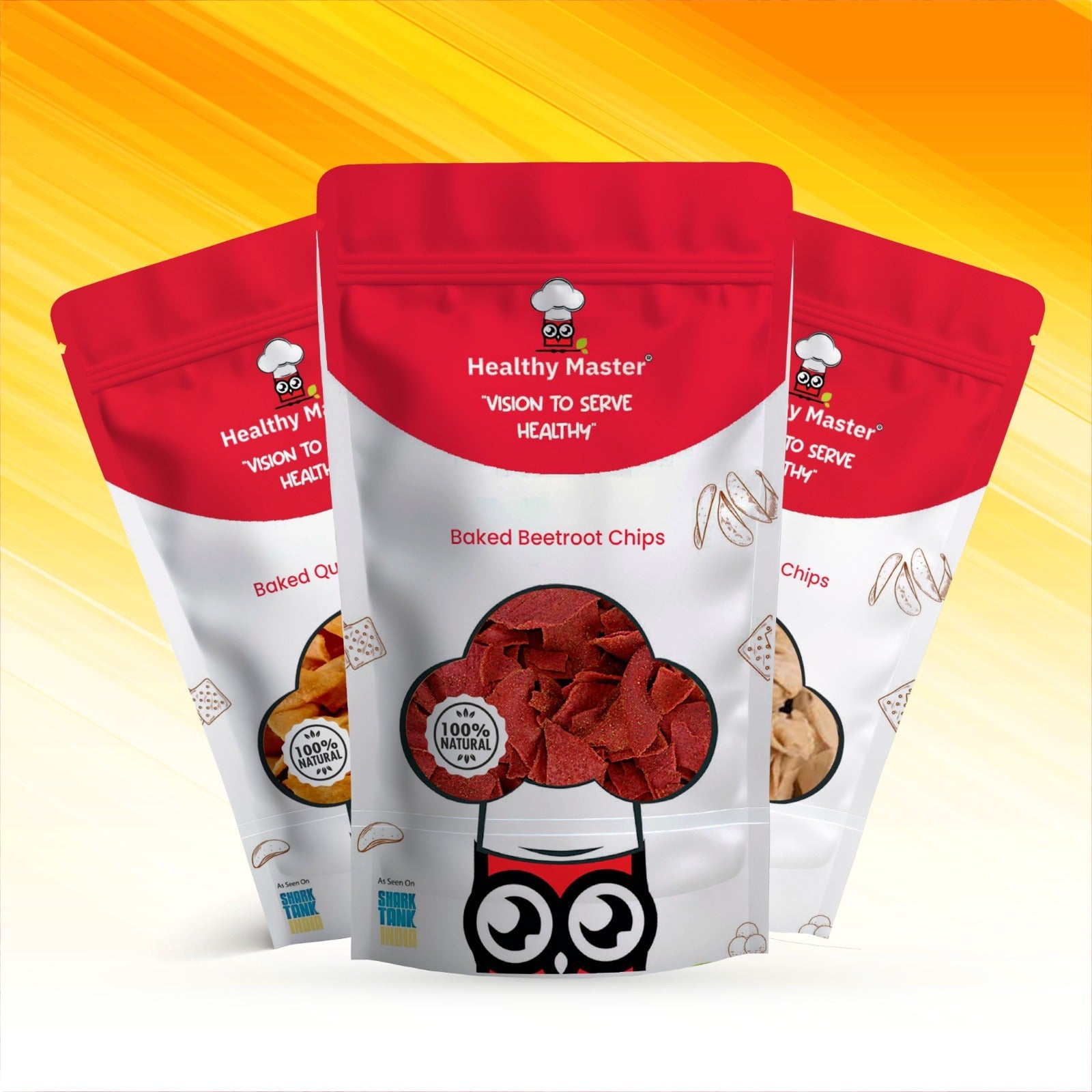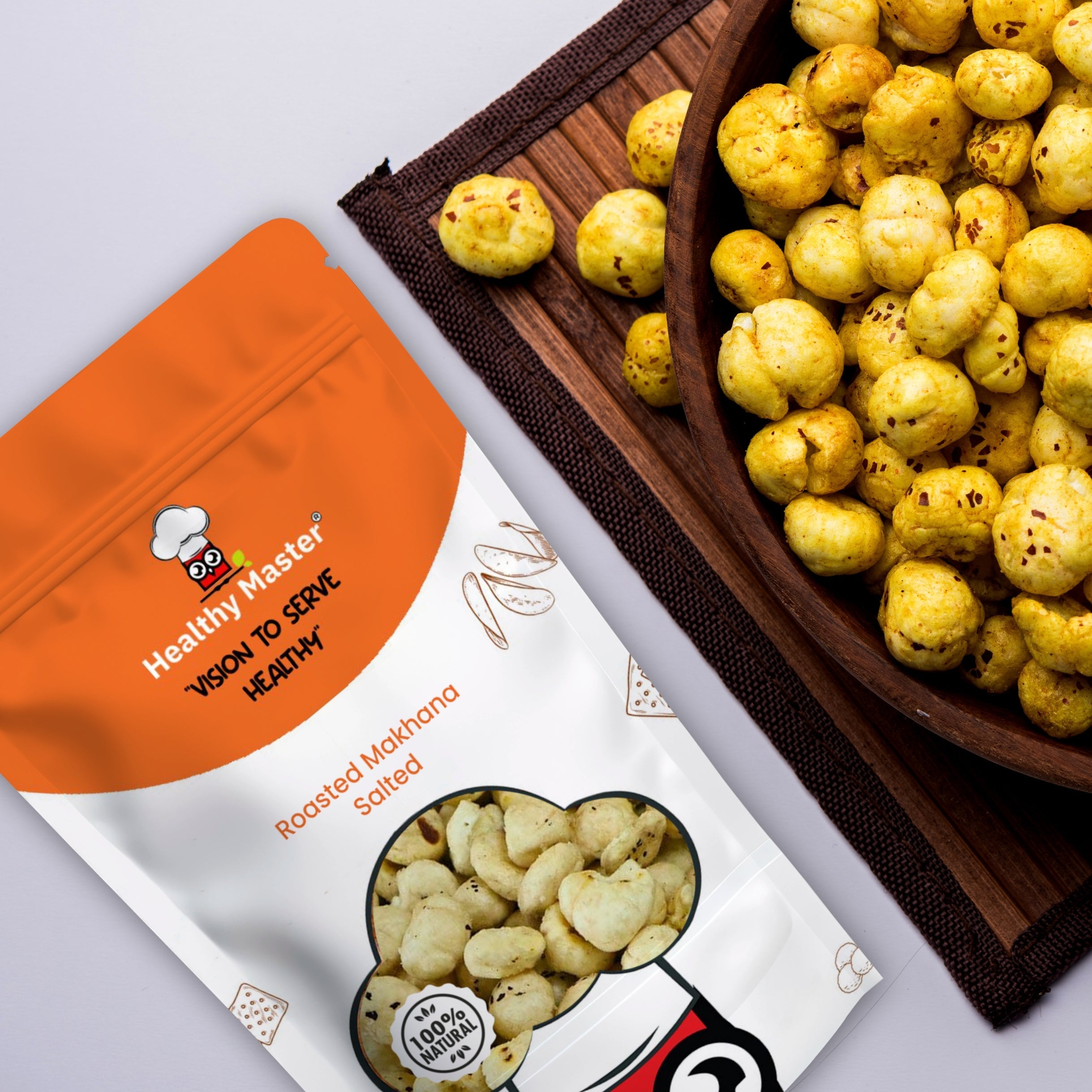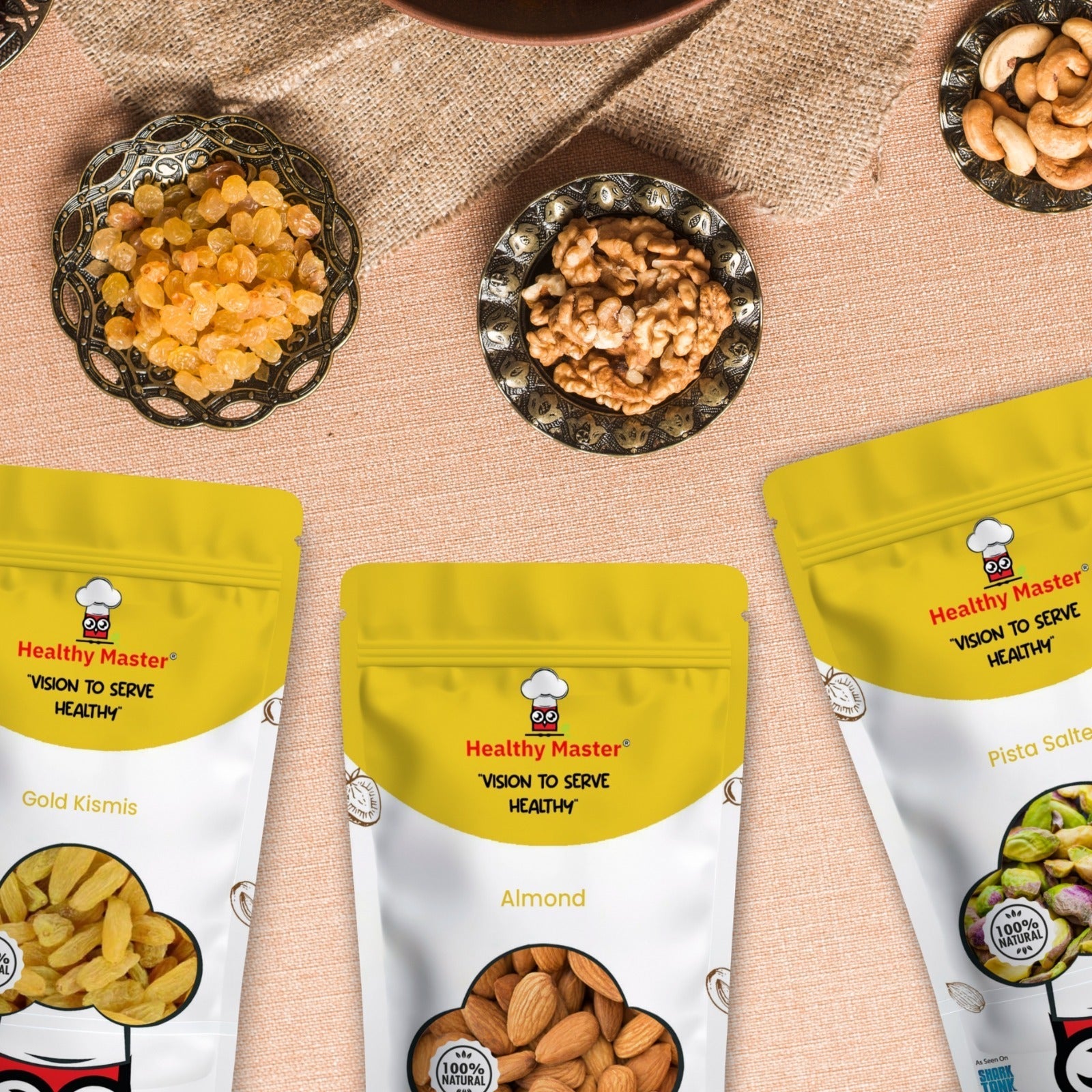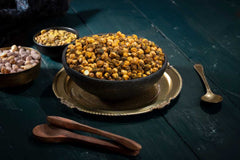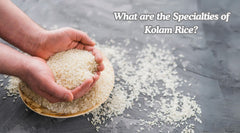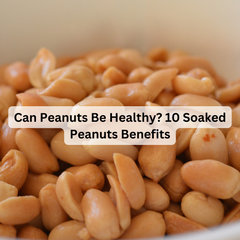Let’s be real, snacking is a way of life. Whether it's a mid-meeting munch, something to gobble while bingeing your favorite show, or just a little something to keep the tummy growls silent before dinner, snacks are non-negotiable. But would you believe us if we told you there’s a way to snack guilt-free without compromising on flavor, crunch, or nutrition?
A traditional Indian superfood, Roasted Makhana, has suddenly become a snack star in the global health-food industry as awareness is growing. In this blog, we’ll talk about the benefits of roasted makhana, its nutrition facts, and answer all your questions related to weight loss to portion control.
So, if you’ve been wondering whether roasted makhana deserves a permanent spot in your kitchen, shop Healthy Master’s range of Roasted Makhana. This is not just another “superfood” hype. This is a true snack evolution.
What is Roasted Makhana?
Makhana, also known as fox nuts or lotus seeds, comes from the Euryale ferox plant, which grows in the still, shallow waters of India’s wetlands. Once harvested, these seeds are popped over heat to reveal that fluffy white puffs that are then lightly roasted, resulting in the beloved roasted makhana for snacking.
These aren’t nuts or grains. They're seeds. And when roasted just right, they’re crunchy, mildly nutty, and incredibly addictive. They are a great alternative to popcorn.
Makhana’s Ancient Roots
Long before it became the go-to food for weight-loss influencers and dietitians, makhana had already earned a reputation in Ayurveda for being balancing, calming, and restorative. It was often consumed during religious fasts, served to toddlers as finger food, and given to new mothers for recovery and strength.
Today, its reputation has only grown stronger, with modern science now validating many of these ancient claims.
How Roasted Makhana Differs from Regular Makhana
Roasting makhana is not merely about taste; it's about well-being.
-
Raw makhana is hard to digest and needs cooking or roasting to release its full nutritional value.
-
Fried makhana, which is generally used in packaged snack foods, has excess oil, salt, and preservatives.
-
Roasted makhana, however, is dry-roasted (occasionally with a light coating of oil or ghee), keeping the nutrients without adding calories or unhealthy fats.
It is this dehydrating roasting that changes makhana to become a light, aerated, and healthy snack to which health-conscious consumers in all ages are drawn.
Also Read: Poppy Seeds Benefits
Nutritional Value of Roasted Makhana (Per 100g)
Let’s break down why nutritionists keep recommending this humble super snack:
|
Nutrient |
Amount per 100g |
|
Calories |
~347 kcal |
|
Protein |
9.7 g |
|
Carbohydrates |
76.9 g |
|
Dietary Fiber |
14.5 g |
|
Total Fat |
0.1 g |
|
Saturated Fat |
Negligible |
|
Calcium |
60 mg |
|
Magnesium |
67 mg |
|
Potassium |
500 mg |
|
Iron |
1.4 mg |
|
Glycemic Index |
Low (~32) |
With high fiber, plant protein, and a host of essential minerals, roasted makhana is nutrient-dense yet incredibly light, making it ideal for everyday snacking.
Key Health Benefits of Roasted Makhana
1. Is Roasted Makhana Helpful in Weight Loss? Yes.
This is perhaps the most discussed advantage, and rightfully so.
-
Roasted makhana is not very calorie-dense but is very voluminous, so you can snack on plenty without exceeding your daily calorie allowance.
-
It's rich in dietary fiber, which induces satiety (read: you feel fuller for longer, eat less trash later).
-
Unlike other "diet snacks," it really fills your desires with a natural, popcorn-like crunch.
It stands comparison to fried namkeens, biscuits, or bakery puffs, and even emerges better given the amount of calories loaded in these.
2. Health Gains of Roasted Makhana for Heart Health
Heart-smart snacking? Why not?
-
Due to its low sodium and high potassium value, roasted makhana maintains blood pressure.
-
It's cholesterol-free, making it ideal for individuals with cardiovascular risk management.
-
The antioxidants eliminate inflammation, which is most commonly the cause of heart disease.
If you or someone in your family is fighting high BP or attempting to avoid future cardiac complications, substituting fried foods with makhana is a step in the right direction.
3. Promotes Blood Sugar Regulation
Let's discuss blood sugar.
-
Roasted makhana contains a low glycemic index, meaning it slowly and steadily releases glucose into the bloodstream.
-
It avoids sugar crashes and highs, which is a big benefit for diabetics or anyone wishing to stabilize energy levels better.
-
It doesn't have refined sugars, so it is a much healthier option than energy bars, sweet cereals, or biscuits.
Couple your makhana in the evening with a fistful of unsalted almonds for a perfect combination of carbs, protein, and good fat.
4. Supports Bones and Joints
Makhana is high in calcium and magnesium, right?
-
These are critical for bone density, joint lubrication, and muscle function.
-
For menopausal women and elders, who are at high risk of osteoporosis, this is a snack for healthy bones without heaviness and a difficult texture.
-
Even children can enjoy the natural calcium dose.
Need a healthy, fun snack for your kids? Mix makhana in some jaggery glaze and put it in their snack boxes. It's much healthier than chocolate-coated cereal puffs.
5. Enhances Digestive Health
A sluggish gut can drain your energy and mood. Roasted makhana to the rescue.
-
The high fiber content promotes regular bowel movements and aids digestion.
-
It helps relieve bloating and gas, especially when consumed in moderate amounts.
-
Being light and easily digestible, it’s even ideal when recovering from illnesses or during detox phases.
If you have IBS or simply get bloated, replace your tea-time biscuits with plain roasted makhana for a week, and you may feel a real difference.
6. Gluten-Free & Allergen-Friendly
Today's snack shelves are lined with "healthy-looking" products concealing allergens, emulsifiers, or artificial flavorings. Roasted makhana is inherently:
-
Gluten-free, making it perfect for celiac disease or gluten intolerance sufferers
-
Low in allergens, except when prepared with dairy-based coatings or artificial flavors
-
Safe for infants, pregnant women, and even the elderly
You can serve it proudly during family gatherings or place it in school tiffins without fear of digestive discomfort or reactions.
7. Antioxidant-Packed Super Snack
The actual unsung hero of makhana? Its antioxidant value.
-
Flavonoids such as kaempferol combat free radical aging, promote cell repair, and retard indicators of aging.
-
Maintains healthy skin, lowers inflammation, and promotes overall immune function.
For wellness-oriented millennials who want to invest in beauty from the inside out, a daily bowl of roasted makhana might be their new skincare must-have.
Best Times to Eat Roasted Makhana
Curious when to reach for that crunchy bowl? Timing is more important than you realize.
-
Mid-Morning: Good means of getting through office hours without a crash
-
Tea Time: Wholesome 5 PM snack that won't kill your appetite for dinner
-
Post-Workout: Pair with protein for recovery without bloat
-
Traveling or On-the-Go: Mess-free, non-perishable, and easy to pack
Just don't eat it just before bedtime in bulk, it's still high in fiber and may disrupt deep sleep in sensitive tummies.
Also Read: Mamra Almond Benefits
How to Eat Roasted Makhana: Beyond the Basics
The gorgeous thing about makhana is that it's incredibly versatile.
-
Plain salted (traditional and safe)
-
Ghee-roasted with cumin (digestion superstar)
-
Peri-peri masala (spice fans)
-
Curries: Believe it or not, yes, makhana curry exists, and particularly in North Indian cooking!
Makhana vs Other Snacks: Which Wins?
Let’s stack it up:
|
Snack |
Calories (30g) |
Fiber |
Fat |
Protein |
Additives |
|
Roasted Makhana |
~100 |
High |
Low |
Moderate |
No |
|
Potato Chips |
~160 |
Low |
High |
Low |
Yes |
|
Fried Namkeen |
~180 |
Low |
High |
Low |
Yes |
|
Masala Peanuts |
~150 |
Low |
High |
Moderate |
Yes |
|
Roasted Chana |
~120 |
High |
Low |
High |
No |
While roasted chana comes close in nutrition, makhana scores higher on being easier to digest, lighter, and more allergy-friendly, making it ideal across all age groups.
A Few Precautions
No food is perfect if overdone. Here’s what to keep in mind:
-
Don’t eat more than 30–40g in one sitting; too much fiber can cause gas or bloating.
-
Always read labels—avoid makhana snacks with artificial flavors, MSG, or added sugars.
-
If you’re buying flavoured versions, choose brands like Healthy Master that use natural spices and low sodium.
Why Roasted Makhana Deserves a Spot in Your Life
So, there you have it, the many benefits of roasted makhana, all laid out for your snack-loving heart. It's crunchy, clean, naturally nourishing, and wildly versatile.
Whether you're a busy professional, a conscious mom, a weight-watcher, or just someone trying to snack better, roasted makhana fits in, without demanding too much effort or expense.
Ready to upgrade your snacking habits?
Explore our delicious range of Millet Snacks at Healthy Master, because smart snacking starts with smarter choices.
Frequently Asked Questions
-
Can I eat makhana daily?
Yes! Daily intake in moderation (30–40g) is safe and healthy.
-
Is roasted makhana good at night?
A small portion is okay. It’s light and easy to digest. Just avoid spicy versions close to bedtime.
-
Can children and pregnant women eat makhana?
Absolutely. It’s rich in calcium and iron, great for growing kids and expecting moms.
-
How many makhanas should I eat per day?
Stick to one cup (about 30g) per day. You can go up to 50g if it’s your main snack source.
 Deal of the week : Trial Snack Box - 18 Wholesome Delights Just at ₹ 899.00
Deal of the week : Trial Snack Box - 18 Wholesome Delights Just at ₹ 899.00



